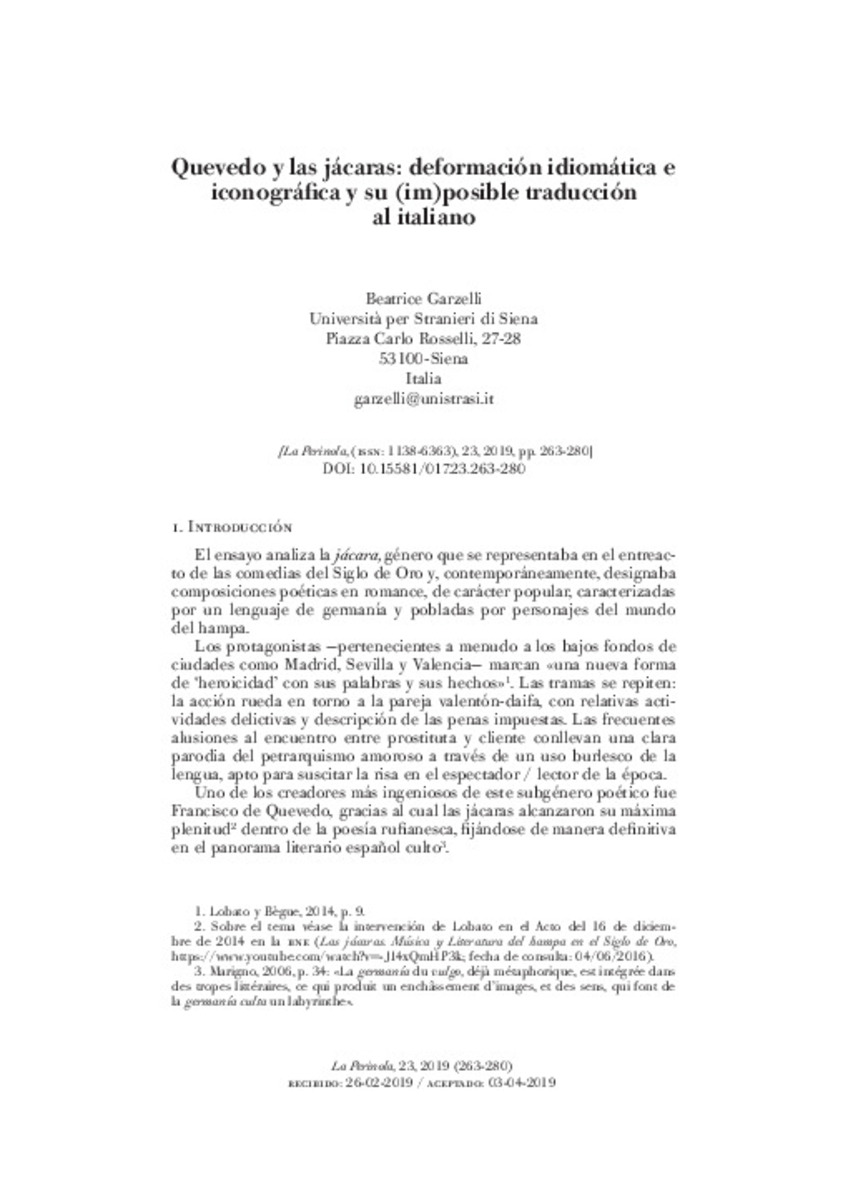Quevedo y las jácaras: deformación idiomática e iconográfica y su (im)posible traducción al italiano
Other Titles:
Quevedo and the "jácaras": idiomatic and iconographic distortion and its (im)possible translation into Italian language
Keywords:
jácaras
Quevedo
deformación idiomática
iconografía
traducción al italiano
pérdidas y compensaciones
Publisher:
Servicio de Publicaciones de la Universidad de Navarra
Citation:
Garzelli, B. (Beatrice). "Quevedo y las jácaras: deformación idiomática e iconográfica y su (im)posible traducción al italiano". La Perinola. 23, 2019, 263 - 280
Statistics and impact
0 citas en

0 citas en

Items in Dadun are protected by copyright, with all rights reserved, unless otherwise indicated.








